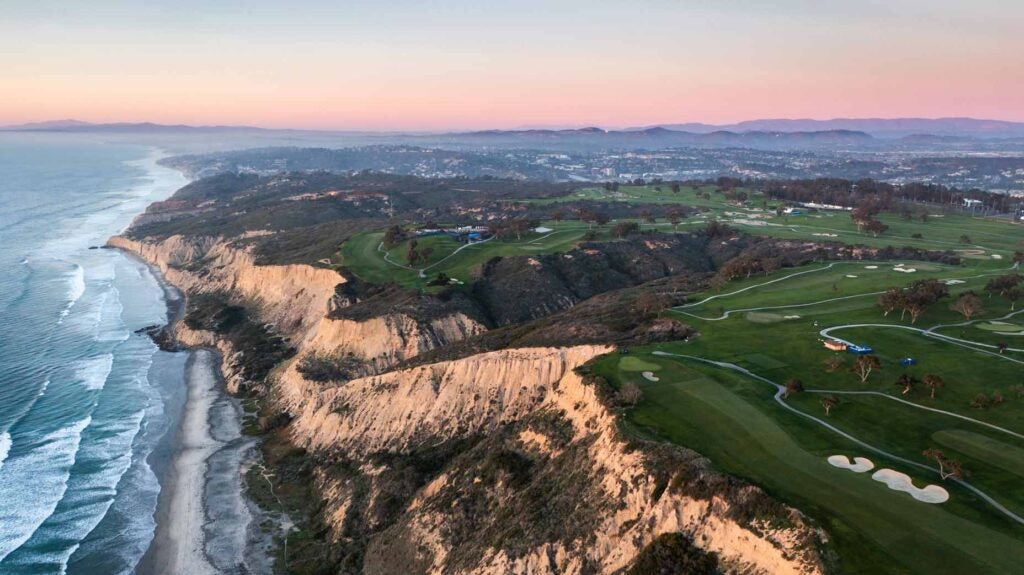What’s the toughest golf course you’ve played?
Any answer you provide will likely be a mix of fact and opinion. In golf, as in life, after all, difficulty is often subjective. Some players are petrified by tree-lined fairways, while others have less trouble hitting slender targets. Lightning greens are what give them fits. What’s easy for one 13-handicapper might be rough on another.
Horses for courses. That sort of thing.
Throw in other variables — was the wind howling on the day you played? Were you paired with a slowpoke who threw you off your game? — and you see why ranking “toughness” can be, well, tough.
Which doesn’t mean that course difficulty can’t be measured. The tool for doing so is the Course Rating System.
In the weeks and months ahead, as we take a state-by-state look at the “toughest” courses in the country, we’ll be leaning heavily on this system, so it’s worth a refresher on how it works.
On almost any course you play (assuming it has been rated, which it probably has), you’ll see Course and Slope Rating posted on the scorecard. What do those numbers mean?
Plainly put, the course rating tells you how difficult a course is for a scratch player. If a course rating is, say, 72.6, that means a scratch golfer is expected to average 72.6 on his or her better rounds there. It’s a fairly easy metric to grasp because it’s measured in strokes.
The slope rating can be harder (objectively!) to wrap your head around because it gets into relative terrain. It gauges how difficult a course is for a bogey player compared to a scratch player.
For the uninitiated, Scott Hovde, the USGA’s director of course rating and handicap research, offers the analogy of downhill skiing. On any trail — whether it’s a beginner’s run or double black-diamond — an expert skier will fare better than a novice. But, Hovde notes, as the trail “gets longer and/or has more obstacles, such as turns, moguls and steepness, it will affect the expert skier less than the recreational skier.”
Same goes for the golf course. Tons of bunkers and forced carries and elevation changes will be tougher on a hack than they are on Tiger. That relativity matters because it allows for a more portable handicap system. If you had only Course Rating, your handicap would be the same on every tee at every course.
These ratings are part of the World Handicap System, but in this space, we’ll be staying domestic. And with the PGA Tour in Los Angeles for the Genesis Invitational we’ll focus this week on California.
According to the numbers, what’s the toughest course in the Golden State?
A leading candidate is Dragonfly Golf Club, in the Central Valley, which, at 8,073 yards from the tips (or, the “way-back,” as they’re called on the scorecard) boasts of being the longest course in California. The property isn’t in the mountains, so you don’t get extra carry in thin air. Good luck reaching the 627-yard, par-5 5th in two.
From the “way-back,” Dragonly has a 78.6 Course Rating and a 144 Slope Rating, which is stout by any measure. But those aren’t the highest ratings in the state. That honor goes to the South Course at Torrey Pines, with a Course and Slope Rating of 78.8 and 148.
What makes the South so tough? Take your pick. It’s long, for starters: 7,802 yards. The coastal air is heavy. The winds can be beguiling. The rough is grabby. On several holes, an errant shot means bye-bye ball.
On any given day, a scratch golfer would be expected to score slightly higher on the South Course than on Dragonfly. The Course Rating tells us that. The Slope Rating tells us it would produce higher scores across all handicaps, too. (If you’re keen on crunching numbers at home, Hovde says that the South’s 148 Slope Rating would result in a roughly 1.3 stroke scoring difference for every 1.0 difference in Handicap Index, meaning that a 12-index player would be expected to shoot about 2.6 strokes higher than a 10 index.)
We could go on. It’s a difficult track, even if Mattieu Pavon made it look easy. Late last month, on a tournament setup that was surely tougher than the Course Rating for everyday play, the Frenchman won the Farmers Insurance Open at Torrey with a final-round 69.
